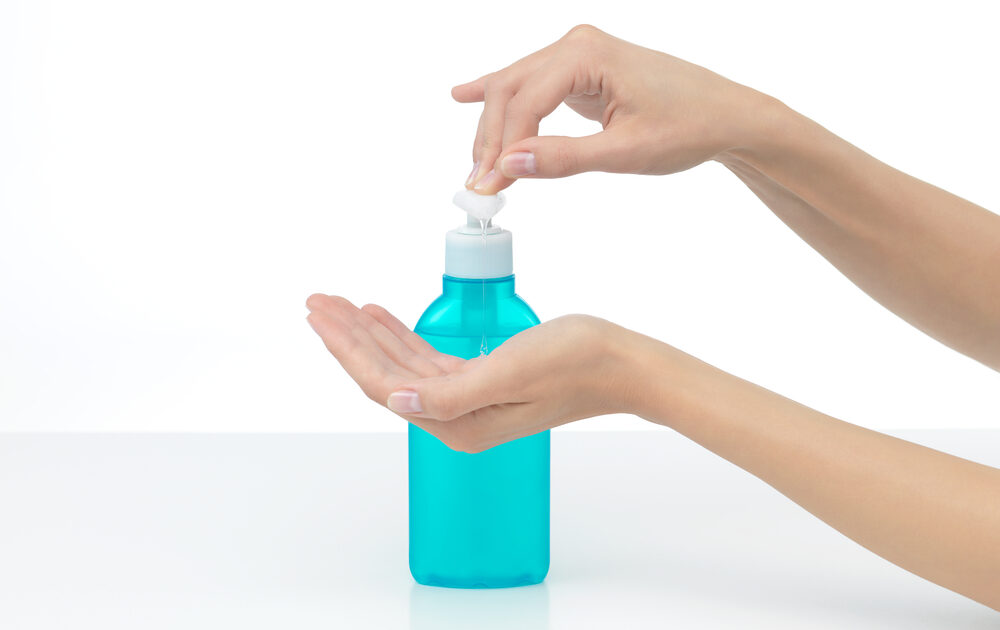One More Reason to Ditch the Hand Sanitizer: It’s Getting Kids Drunk

Calls to poison control centers have been on the rise due to an unexpected cause: hand sanitizers. Hand sanitizers contain 95 percent alcohol, which can get a curious child drunk in just a few squirts. Poison control centers have been hit with worried parents who fear that they’re unresponsive, word slurring, and vomiting children have alcohol poisoning. It’s a frightening situation that’s becoming all too common, according to CNN.
Today’s hand sanitizers come in a host of seemingly delicious flavors from strawberry to coconut cream and even red velvet. Small children may think they’re harmless, making them all the more dangerous. One little girl ingested 3 to 4 squirts of a strawberry-flavored hand sanitizer before being rushed to the hospital with alcohol poisoning. Her blood alcohol level was .179. double the legal limit for an adult.
“Kids are getting into these products more frequently, and unfortunately, there’s a percentage of them going to the emergency room,” Dr. Gaylord Lopez, Georgia Poison Center’s director said to CNN.
According to the article, “[t]he amount of alcohol in hand sanitizer ranges from 45% to 95%. Ingesting even small amounts — as little as two or three squirts in some cases — can cause alcohol poisoning. By comparison, wine and beer contain about 12% and 5% alcohol,” Lopez said.
In 2010, 3,266 cases were reported to poison control as a result of ingesting hand sanitizer. What’s worse, preteens and teens are intentionally ingesting it on dares and ending up blackout drunk.
“A kid is not thinking this is bad for them,” Lopez said. “A lot of the more attractive (hand sanitizers) are the ones that are scented. There are strawberry, grape, orange-flavored hand sanitizers that are very appealing to kids.”
Hand sanitizers were already getting bad press as a result of ingredients like triclosan, a known endocrine disruptor. Studies have shown that the chemical interferes with the body’s thyroid hormone and children that are exposed to it at a young age are more likely to have eczema and allergies. What’s more, pregnant women with high amounts of triclosan in their urine impacted the hormones that regulate growth and reproduction in their offspring. And a recent study, published in the Journal of Antimicrobial Chemotherapy, found that antibacterial products that contain triclosan are no better at killing germs than regular soap and water.
There are also concerns that triclosan may contribute to bacteria becoming resistant to antibiotics. Each year, according to the Centers for Disease Control and Prevention, 2 million people become infected with antibiotic-resistant infections, and 23,000 people will die from them. As a result of growing concerns, the U.S. Food and Drug Administration (FDA) has been taking a closer look at antibacterial hand sanitizers, soaps, and body washes.
“New data suggest that the risks associated with long-term, daily use of antibacterial soaps may outweigh the benefits,” Colleen Rogers, Ph.D., a lead microbiologist at FDA said in a statement. There are indications that certain ingredients in these soaps may contribute to bacterial resistance to antibiotics, and may have unanticipated hormonal effects that are of concern to FDA.
That’s why your best bet, especially as a parent, is to use good old warm soap and water and ditch the hand sanitizer entirely. But either way, keep it out of your children’s reach.
Related on Organic Authority
Not So Handy: The Dangers of Using Hand Sanitizer
82 Environmental Organizations Seek Ban on Hand Sanitizer
Endocrine Disruptor Triclosan Found in 50 Percent of Newborns
Image of hand sanitizer from Shuttershock

